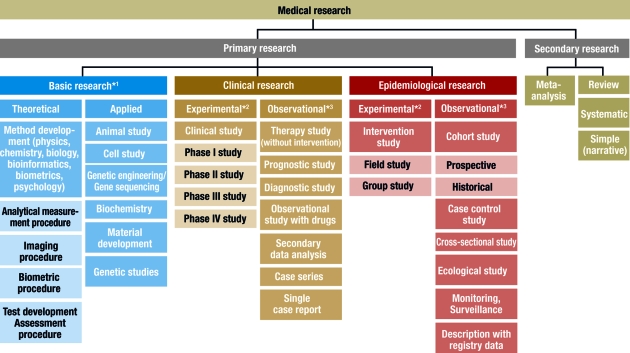It goes without saying that getting involved in research as a medical student, while an important part of the medical school experience, can also be an intimidating prospect. Not only are you balancing a hectic schedule, but it’s tough to know how (and where) to get started.
So, how exactly do you secure an appropriate, fulfilling research opportunity that will enhance your residency application and put you on track for success? To answer that question, we’ll walk through the absolute fundamentals of pursuing research as a medical student.
Getting Started with Research in Med School
What are the advantages of participating in research as a medical student?
As mentioned, research is an important component of the residency application. Particularly, if you are interested and invested in a particular aspect of medicine or if you want to match into a competitive specialty or at a nationally-ranked academic institution.
Research experience helps to strengthen a resume and allows candidates to fill in for gaps in their application. For instance, an academic program director might be willing to overlook an applicant’s marginal pass on an elective rotation if that applicant demonstrates strong participation in research. This is not a “magic bullet” to matching with a residency program, however—the priority here is still pass your rotations and national licensing exams.
Further, some applicants find research opportunities so appealing that they even take a research year to churn out publications and present at national conferences. Quality and quantity are both important in terms of publications and presentations. Participating in research as a medical student can help you network as well, further advancing your career in medicine, academia, or industry.
So, how do you get into a research project that eventually yields publications and acclaim?
How much of a time commitment is research?
Look, I get it. You’re a busy medical student. Last week you prepared in order to lead a women’s health interest group meeting, this week you have those pesky histology lectures to catch up on, and next week is a particularly intimidating anatomy practical. Not to mention, you haven’t had a date night with your significant other since Valentine’s Day because you’ve been busy with your pharmacology study group, and you still have to call your mom.
How will you possibly have time for research in an already hectic MS1 year and how much time should you allot to the cause?
To put things into perspective, keep in mind that research time ranges from entire month-long electives to a more longitudinal approach. The most common is longitudinal research—this involves working on a project a few hours a week over the course of 6-18 months, typically with a few dedicated weeks near completion to make the publishing deadline. Busy students should dedicate around 10-20 hours weekly for tasks such as obtaining IRB approval, reviewing charts, or writing drafts.
Alright, I’m interested. Where do I start?
You’ve heard this before. “Just ask!” Often, it’s as simple as that. Create opportunities for yourself by being enthusiastic and inquisitive. Seek out attendings or residents on your rotations, ask if there are any research projects they know of or are involved in. Research is a team effort, and oftentimes, residents will have unfinished projects that could use the help of a medical student to complete.
Another common finding is that graduating students or students who’ve changed interests do not wish to further continue their projects. This can be a great place to pick up where they left off, as some of the work may already be finished before you even start. (As a disclaimer for this approach: I would be cautious to ask to ensure the project in question is not an issue. Red flags in this case are if the publication process is in limbo or significantly delayed, if funding has ceased, or if the PI plans to change roles/jobs.)
Cast a wide net and email attendings whose research you find interesting and ask if there is any way to get involved. Some of your requests will be ignored (don’t take it personally, people are just busy!) but by and large, academics are helpful and even if they don’t have a project that matches your interests, they will likely have a colleague to direct you to.
So, whether you are interested in starting a project or joining an existing one, start drafting your emails. After all, what do you have to lose?
Choosing a Research Opportunity
Pick an activity that aligns with your goals
Naturally, you want to ensure the research activity you participate in aligns with your goals because, ultimately when you interview for residency or an introductory consulting position, or for a job in biotech, having a coherent theme in your publications that position alongside your passions will distinguish you amongst your peers.
Find a good fit with your PI
To get started on a research project, you will first need to find a mentor or principal investigator (PI). Criteria vary but generally, most agree that a good PI is:
- Prolific: They have had various publications over the past decade with academic peer-reviewed journals.
- Responsive: They do not take weeks to answer emails or are not away from their lab for weeks at a time.
- Has aligned interests: Publication takes a lot of work, often involving potentially hundreds of hours of effort. Thus, you and your PI should see it as a big deal. Make sure it is something you are interested in and advances your career whether you’re in a lab doing cell cultures or editing epidemiology papers or designing bio wearables at the intersection of healthcare and technology.
- Has adequate funding: This ensures you can be compensated, or at the very least your project has the funding necessary to move forward. Publishing in top-tier academic journals isn’t cheap!
Keep in mind that some residencies have research time built in, often in the form of research electives that can last months to a year. If your desired program allows, and you remain interested in research, share your research interests and projects to see if it can be continued at the institution, or if there is something in a similar realm.
Decide which type of research project you’d like to pursue
The following are different types of medical research you could pursue as a medical student. This is not a comprehensive list, but rather, a starting point for where to look and how to increase your research output:
Option #1: Case Reports and Series
A case report is a detailed write-up about the clinical course of a particular patient—an interesting presentation, an unusual case, a new potential treatment. It is used to describe an unusual or novel occurrence based on disease process, diagnosis, and/or treatment.
Pay attention when you are on rotations if you see anything interesting or unusual. Do a quick PubMed search to see what’s already out there and if there isn’t much, take the initiative and ask your attending to write it.
Case series, on the other hand, look at multiple patients in a retrospective manner. Case series are more tedious to write but also look better on an application as they provide more significant scientific conclusions.
Pros:
- Easy to write
- Least time-consuming
- No funding needed
- Quick to publish if yours is accepted
- Usually the least intensive data mining
Cons:
- Not as impressive (thus easier to write and fast to publish)
- Journals receive so many so it can be difficult to publish
Option #2: Clinical Research
This is the cream of the crop, the nitty gritty evidence-based medical research. Typically this includes the studies and trials you read about for the biostats portion of your exams. Anything from randomized trials to case-controlled trials and cohort studies are included in this broad category.
Pros:
- Highly regarded on applications
- AOA offers students funding for certain research projects
- Significant contribution to medicine/science in your field
- Publication includes more prestigious journals
Cons:
- Many barriers of entry (time, funding, depth of research)
- Requires IRB review meaning strict protocols
- Requires large sample sizes, thus requiring dedicated time and often funding.
- Students often use a dedicated research year to gain experience in this area.
- Slow and grueling publication process and peer review
Option #3: Literature/Chart Review
Systematic literature or chart reviews basically existing work on a particular, unresolved, or controversial topic in medicine. There are different categories including meta-analyses, systematic reviews, and traditional literature reviews.
This type of research typically involves combing through dozens to hundreds of charts in search of information that is relevant to the research question you are asking (i.e., scouring through charts for patients with multiple myeloma that were treated with a particular therapy and looking at the outcomes). Programs like Zotero can be helpful to make your searches easier.
Furthermore, research librarians can be extremely helpful in using search tools, formatting your research, and going about the systematic review process in general. I highly recommend you reach out to your school librarian before you dive in as they are often a high-yield resource.
Pros:
- Accessible for students
- Meta-analysis and systematic reviews offer higher value and are more renowned
- Can often be done in remote collaboration
- Flexible hours of work
Cons:
- Time-consuming to review
- You will need access to various journals to be reviewed
- Tedious and repetitive work that is heavy in data analysis
- Highly specialized! Ask your attendings for topic ideas as they will have a better sense of what is relevant in the field and what has the best chance of publication
What to Do After Publishing Your Research
You put in the effort, now it’s time to reap the rewards! While your friends or parents might not take note that you’re a footnote in this publication in NEJM, resident programs are sure to find out.
On ERAS, there are separate sections for presentations and publications—one dropdown for papers that have already been published, and one for papers that have been submitted/accepted/in press. These appear separately on ERAS, so it’s ideal to have more in the “published” section, preferably in journals that are within your field. The topics look something like this:
- Peer-Reviewed Journal Articles/Abstracts
- Peer-Reviewed Journal Articles/Abstracts (Other than Published = Submitted/Accepted)
- Peer-Reviewed Book Chapter
- Scientific Monograph
- Poster Presentation
- Oral Presentation
- Peer-Reviewed Online Publication
- Non-Peer-Reviewed Online Publication
6 Tips for Medical Students Getting Involved in Research
- Realize that research can be a very slow process. Even prestigious journals can hold on to submissions for months before ultimately making the decision to publish.
- We are not cavemen, use tools! Web and citation tools such as Medeley and Connected Papers are free to use and help a great deal when it comes to tracking literature.
- Formatting is important. Always read the instructions for authors on the websites of the journals you are submitting to. Each journal will have different, often strict specifications from the formatting and scientific writing standards to citation guidelines. The process between submission and publication will be a lot smoother if you follow the instructions ahead of time to avoid the back and forth before going to peer review.
- Writing is a team effort. Be sure to consult your teammates and definitely notify your PI if you have a concern or are unsure about some data.
- You can only submit a particular paper to one journal at a time. Don’t submit the same paper to multiple journals at the same time.
- Lastly, there have been increasing reports of predatory publishing scams. Always use protection and avoid these by first verifying publications that exist on legitimate databases such as PubMed. Stay safe!
Overall, the process of publishing research can be very frustrating, but also very rewarding, especially if you are genuinely interested in research or the topic. Remember to invest time to understand the demands before committing to the project.
Discuss with the principal investigator what you want out of the project and be clear about your time commitment and intentions. Ask classmates for help and pass the word on to others. If you need it, take some extra time for your research. Good luck!






